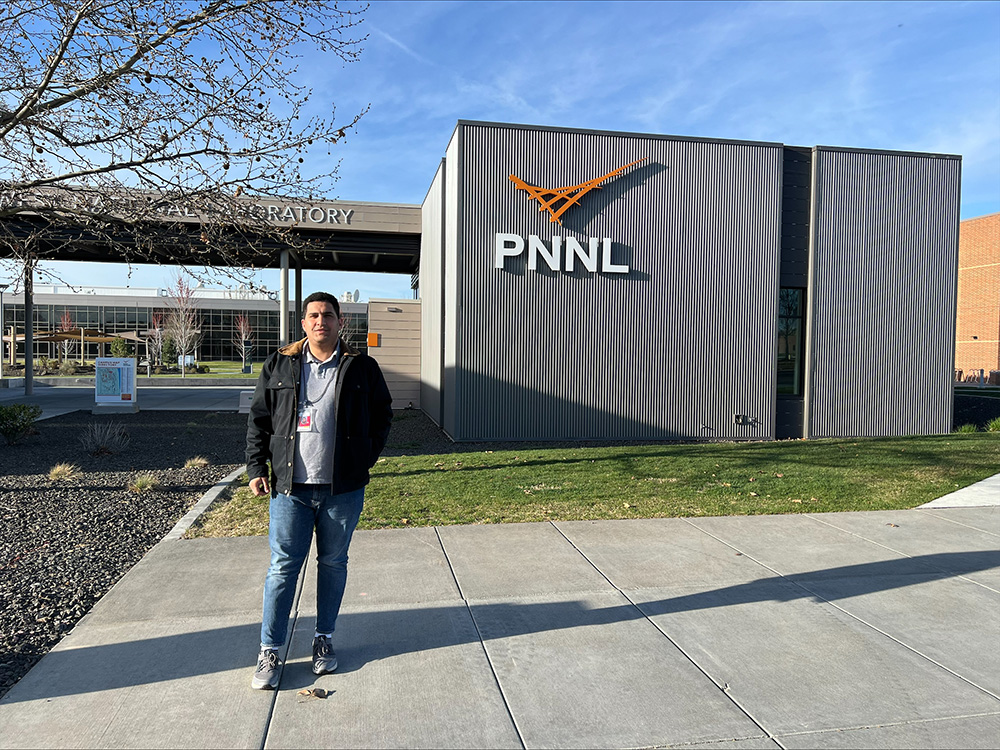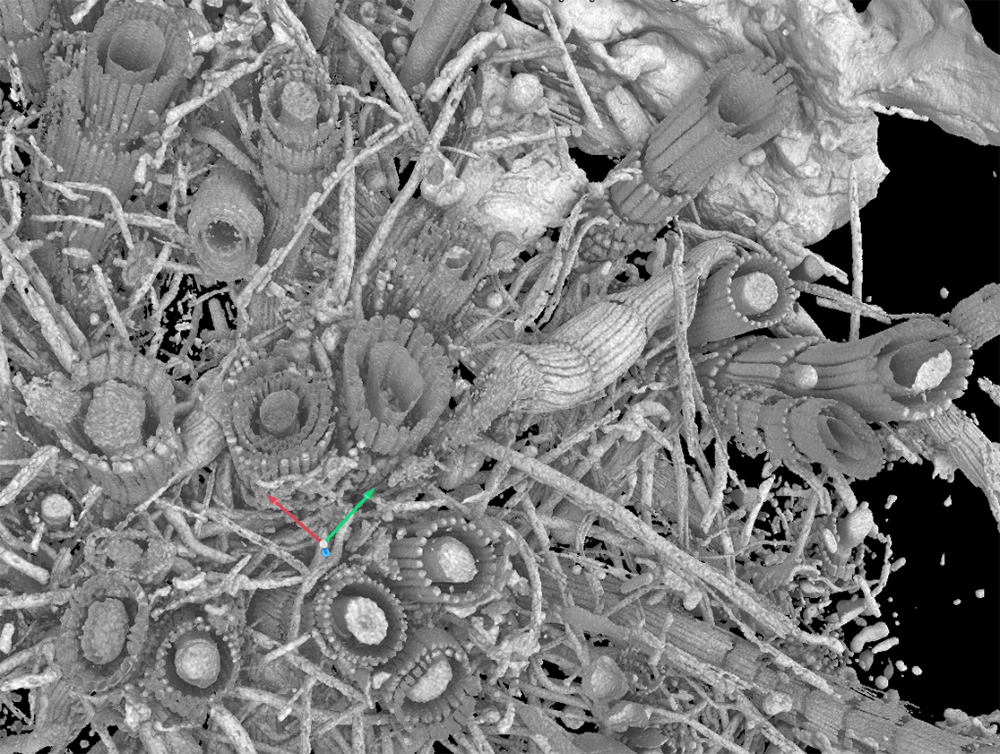LSU Civil, Environmental Engineering Researchers Study Coastal Wetland Root Dynamics
 April 16, 2024
April 16, 2024
BATON ROUGE, LA – A team of LSU researchers led by LSU Civil and Environmental Engineering Associate Professor Navid Jafari (principal investigator) and LSU CEE Research Assistant Mohamed Hassan (co-PI) recently received a $50,000 National Science Foundation I-Corps grant to commercialize its algorithms in studying root productivity in Louisiana wetlands. A second grant was awarded by the Environmental Molecular Sciences Laboratory (EMSL), which is part of the Pacific Northwest National Laboratory in Richland, Wash., that allows the team to use X-ray computed tomography (XCT) and optical coherence tomography (OCT) scans to study these roots.
“Coastal wetlands are valuable ecosystems that improve water quality, provide wildlife habitat and biodiversity, sequester carbon, and protect coastal communities from hurricanes by dampening waves, distancing urban centers from open water, and reducing storm surge heights,” Jafari said. “Understanding how coastal root productivity affects this is essential to preserving land.”
The NSF I-Corps focus of the project is based on the development of X-Roots technology, which utilizes advanced algorithms to analyze XCT, OCT, and SEM scans of belowground root systems.
“The algorithms enable the segmentation and classification of wetland soil components, including macro-pores, dead roots, live roots, and sediments, with a high degree of precision,” Hassan said. “X-Roots expands understanding root systems and their impact of ecosystems. This, in turn, opens the door for innovation, conservation, and commercial growth in potentially multiple industries. By offering insights into wetland root systems, this technology may address pressing global challenges, such as climate change and land management in these critical environments.”
 Hassan recently visited EMSL, where he analyzed Louisiana coastal wetland roots using
OCT technology, which enables accurate identification and quantification of live and
dead roots and provides information about the structure of root systems at the micro-scale
level, aiming to fuse these high-resolution OCT volumes with the XCT scans.
Hassan recently visited EMSL, where he analyzed Louisiana coastal wetland roots using
OCT technology, which enables accurate identification and quantification of live and
dead roots and provides information about the structure of root systems at the micro-scale
level, aiming to fuse these high-resolution OCT volumes with the XCT scans.
“Beyond applications in agriculture, forestry, environmental conservation, and land management, XCT technology has the potential to change how researchers understand and interact with belowground ecosystems, particularly in wetland ecosystems,” Hassan said.
The team will work with LSU’s Office of Innovation & Technology Commercialization (ITC) on patenting their algorithms.
About LSU ITC
LSU ITC protects and commercializes LSU’s intellectual property. The office focuses on transferring early-stage inventions and works into the marketplace for the greater benefit of society. ITC also handles federal invention reporting, which allows LSU to receive hundreds of millions of dollars each year in federally funded research, and processes confidentiality agreements, material transfer agreements, and other agreements related to intellectual property. To learn more, contact Ted Griggs, assistant director of creative strategies, at 225-288-8840 or tgriggs1@lsu.edu.
Like us on Facebook (@lsuengineering) or follow us on X (formerly Twitter) and Instagram (@lsuengineering).
###
Contact: Libby Haydel
Communications Manager
225-578-4840
ehaydel1@lsu.edu